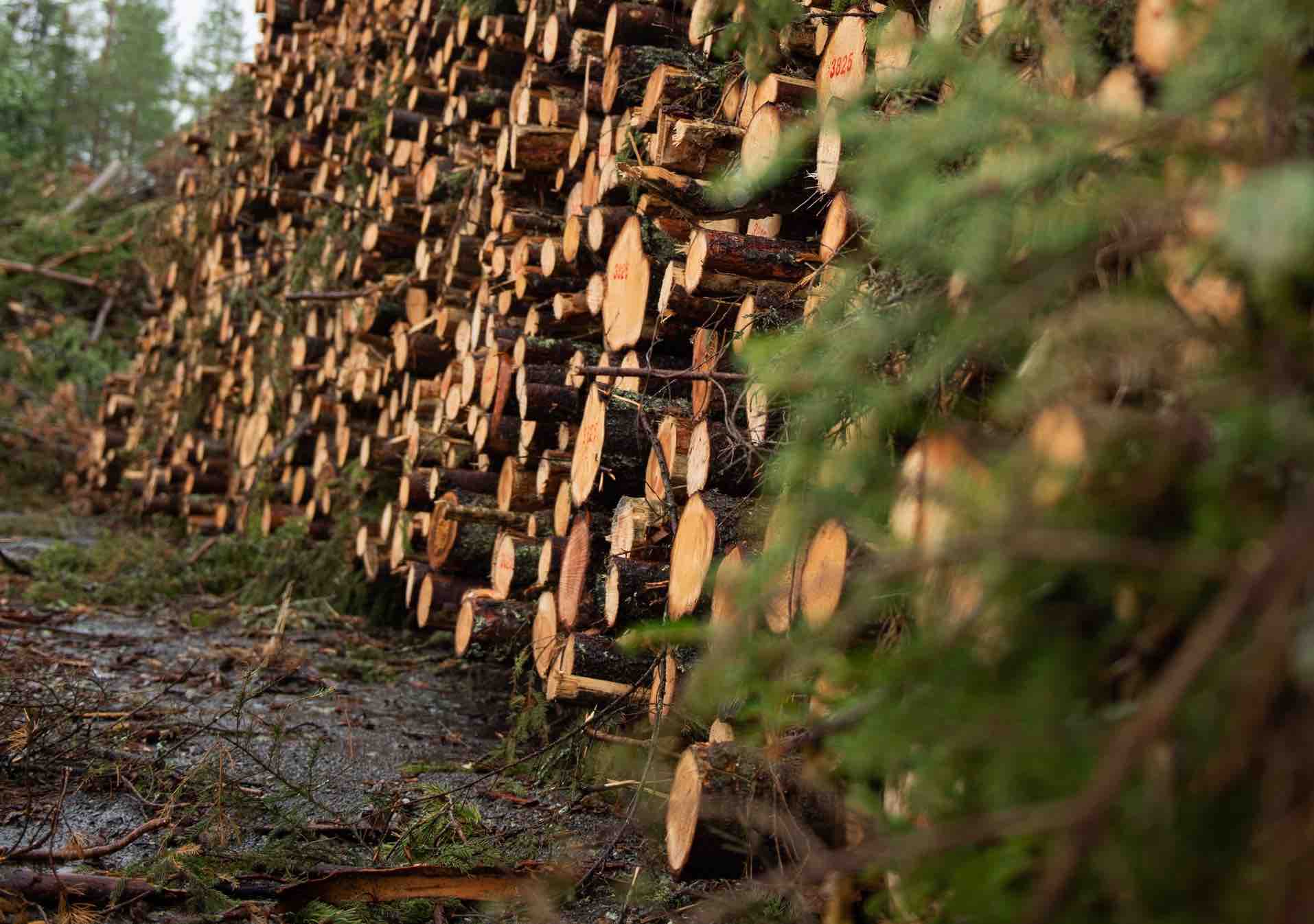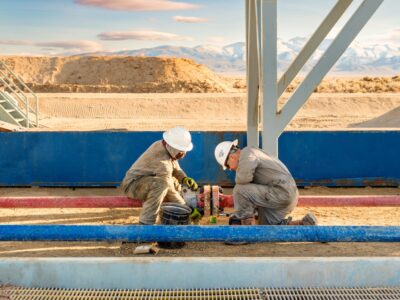(Bloomberg) —
A startup backed and incubated by Bill Gates’ Breakthrough Energy Ventures has engineered a hybrid technology that combines engineering with natural photosynthesis processes to remove carbon dioxide from the atmosphere and store it underground.
“It’s important to understand that carbon removal is not an excuse to keep emitting, or to slow down our transition to a clean energy economy — we need to keep innovating as fast as we can,” Gates wrote in his firm’s “State of the Transition 2023” report, released today. “But it’s become clear that carbon removal will be a necessary tool to have in our toolkit.”
Plants naturally pull CO2 from the atmosphere and store it in their tissue, but that CO2 is released back into the atmosphere when the plant decomposes. Launching today, startup Graphyte takes waste biomass like discarded wood residue or rice hulls, dries and sterilizes it to prevent decomposition. It then condenses it into dense carbon blocks, wraps it in a proprietary polymer barrier and stores it underground in an engineered storage site. The carbon within will be locked away and prevented from being re-released.
The idea for the carbon removal process, which Graphyte calls “carbon casting,” was first conceived by BEV partner Chris Rivest, who brought in Co-founder and Chief Executive Officer Barclay Rogers to commercialize the technology and helm the startup.
“He and I started going back and forth on such an approach of trying to make the most of the carbon within the biomass and then determine ways to ensure that it’s not re-released,” said Rogers. “And through those collaborative discussions, Graphyte was born.”
What appealed to Rivest about this approach was its potential for durable, affordable and immediately-scaleable carbon removal. “There’s a concern around the energy and capital intensity of some of the existing approaches, particularly the engineered approaches,” he said.
Graphyte plans on buying waste biomass from local sources and selling its carbon removal services to corporate buyers. Today those buyers are mostly technology companies like Microsoft and Shopify, which have pledged hundreds of millions of dollars to help scale the nascent carbon removal industry, and view it as critical to meeting their sustainability commitments.
Existing carbon removal technology like direct air capture currently costs hundreds to thousands of dollars per ton of CO2 removed and would require large amounts of renewable energy at scale. Cheaper, nature-based options like planting trees also have drawbacks when it comes to durability and measurement challenges.
By comparison, Graphyte says its levelized cost of production is currently under $100 per ton, a moonshot target for carbon removal that direct air capture is still far from achieving. It also requires a tenth of the energy of direct air capture, and the carbon blocks are projected to be durable for over a thousand years, due in part to the proprietary polymer barrier protecting them, according to Rogers. The process is also land-efficient, with the potential of removing 10,000 tons of CO2 equivalent per acre, he said.
Graphyte is in the process of building its first plant in Pine Bluff, Arkansas, near local timber and rice mills that could serve as biomass sources, according to Rogers. It’s also in the process of signing customer offtake agreements, or a contractual commitment to buy carbon removal services at a predetermined price upon delivery. The first carbon blocks are expected to be produced by January 2024. The startup projects the project will have the capacity to remove 5,000 tons of CO2 per year by the end of 2023 and 50,000 by July of 2024.
The path to rapid scale-up is by no means guaranteed. Commercialization challenges are manifold, from courting enough buyers willing to pay for these removal services to getting regulatory and community buy-in.
Ensuring that the blocks remain buried and that the CO2 trapped within them doesn’t get released, either through degradation or decomposition, is critical. Leakage in these scenarios is possible if the biomass gets wet or experiences significant microbial activity, according to Dan Sanchez, an assistant professor at the University of California at Berkeley, who is a science advisor to Graphyte.
The polymer barrier, in addition to drying and condensing the blocks, acts as “a helpful insurance policy” to prevent degradation of the blocks, Sanchez said.
That insurance policy is going to be key to ensuring that the CO2 stays buried and the blocks don’t produce and release methane, according to Brian Snyder, associate professor at Louisiana State University’s Department of Environmental Sciences. A key risk of biomass-based approaches to carbon removal is that, like landfills, these biomass sinks could release methane, a harmful greenhouse gas, if exposed to bacteria that anaerobically digests the material. Graphyte’s approach of drying, condensing and wrapping the biomass will help prevent that process from happening, he said.
To monitor and measure the CO2 within the blocks, Graphyte will install sensors and proprietary tracer systems in the storage sites. The company has also elected Puro.earth as its carbon registry, a first step towards independent verification of its removals.
One other key concern for carbon removal pathways that involve waste biomass is availability of the material. In Sanchez’s view, there is enough residual biomass in the US for Graphyte’s purposes and “more than enough for any one company to work with.”
Essentially carbon landfills, Graphyte’s carbon blocks will be buried underground, following similar permitting requirements as construction waste landfills. Although the land above the buried blocks could be usable for, say, solar farms, getting regulatory buy-in to do carbon removal projects at scale “is often a challenge,” Rogers said.
“If they have any concerns, we are addressing those concerns,” he said of the company’s engagement with the local Pine Bluff community.
To contact the author of this story:
Michelle Ma in Los Angeles at mma304@bloomberg.net
© 2023 Bloomberg L.P.





